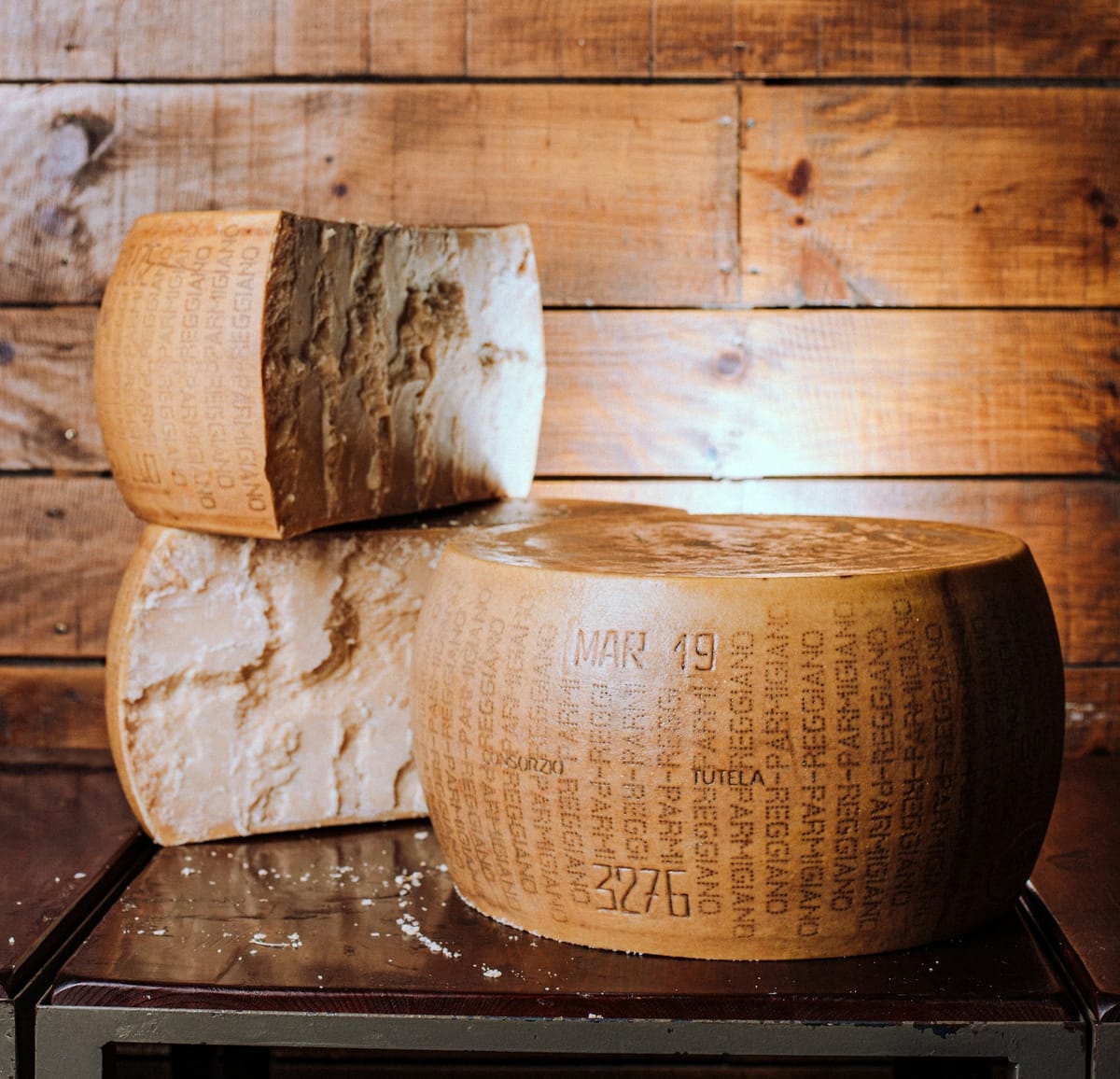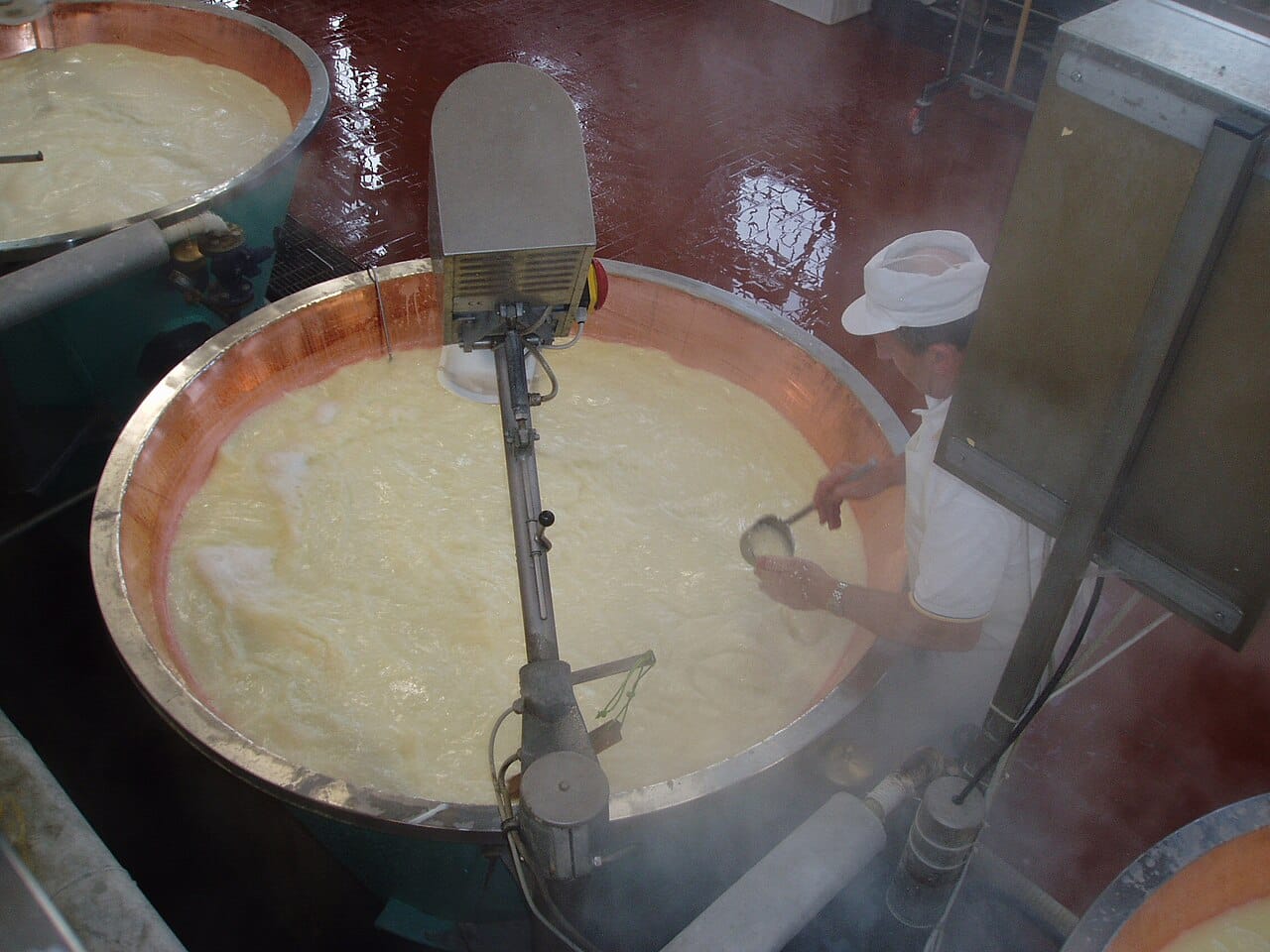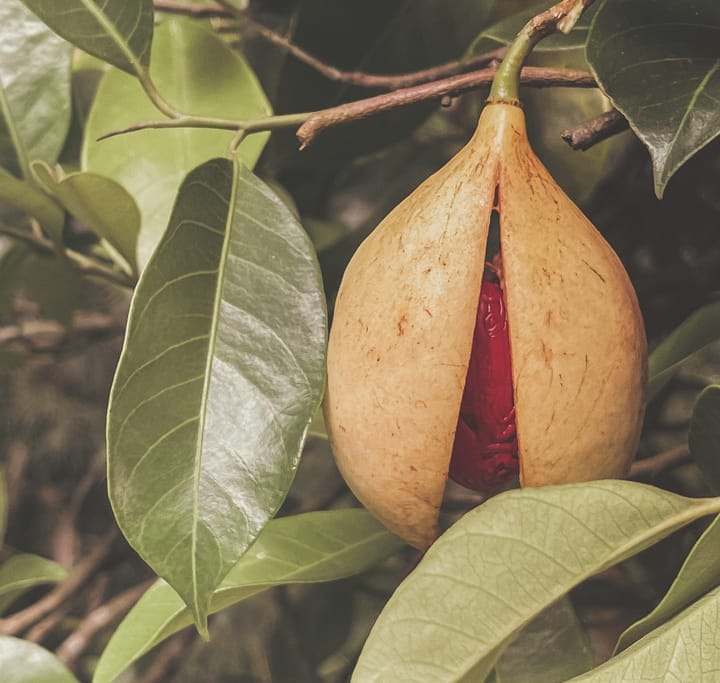Ultimate Guide to Aged Parmigiano-Reggiano Varieties Explained
Discover why aged Parmigiano-Reggiano commands premium prices. From tyrosine crystals to tobacco notes, explore how time transforms this Italian cheese into edible luxury worth $80+ per pound

Picture this: You're standing in a cathedral-like aging cave in Emilia-Romagna, Italy, surrounded by towering shelves holding thousands of golden wheels.
Each 85-pound wheel represents not just cheese, but years of patience, centuries of tradition, and a dedication to perfection that borders on obsession.
This is the world of aged Parmigiano-Reggiano, where time transforms simple ingredients into edible luxury.
What Makes Aged Parmigiano-Reggiano So Expensive?

While most Americans grab pre-grated "parmesan" without a second thought, true connoisseurs understand that authentic Parmigiano-Reggiano is an entirely different creature—especially when it's been aged to perfection.
The minimum aging process is 12 months, but that's just where the journey begins.
The majority of Parmigiano-Reggiano is made from the milk of Holstein Friesian cows (known as Italian Frisona), the black-and-white dairy cows that dominate modern milk production.
These efficient producers yield the consistently high-quality milk that forms the backbone of the Parmigiano-Reggiano industry.
However, a special category exists: Vacche Rosse Parmigiano-Reggiano, made exclusively from the milk of Reggiana Red Cows, a native breed of Northern Italy with a striking auburn coat.
What makes aged Parmigiano-Reggiano worthy of a spot on the world's most exclusive tables?
It's the transformation that occurs as these wheels rest in temperature-controlled aging rooms, developing complexity that rivals the finest wines.
Most of the Parmigiano Reggiano cheese on the market is between 24 and 36 months old, but it can be found with longer maturations, from 40 months to over 100 months.
Understanding Parmigiano-Reggiano Age: From 12 to 100 Months
Young Parmigiano (12-18 Months): Fresh and Milky
At this stage, Parmigiano-Reggiano still whispers of its youth. From 12 to 18 months, Parmigiano-Reggiano still exhibits some of its youthfulness, often described as "milk, yogurt, and fresh fruit" flavors.
The texture remains relatively soft and pliable, perfect for those who prefer a gentler introduction to this king of cheeses.
24-Month Parmigiano: The Perfect Balance
This is where magic begins. By 24 months, the changes are clear, not just in flavor, but in appearance and texture.
The number of visible white crystals increases, and the cheese is crumblier and grainier on the palate.
Those crystals? They're tyrosine, an amino acid that forms naturally during aging—nature's way of adding textural intrigue to every bite.
36-Month Aged Parmigiano: What Top Chefs Choose
At three years, Parmigiano-Reggiano has earned its stripes. At 36 months and beyond, this crumbliness is further accentuated, accompanied by spicier flavours, where fresh fruit aromas give way to more intense dried fruit nuances.
This is the age preferred by many top chefs, including Michelin-starred maestros who understand that this cheese can hold its own against bold flavors.
Red Cow Parmigiano (Vacche Rosse): The Heritage Difference
Above the standard Holstein Friesian production exists another category entirely.
Parmigiano Reggiano Vacche Rosse Red Cows, aged between 2 and 4 years, which derives from the cows of the Reggio Emilia breed, almost extinct.
These auburn-colored Reggiana cows, once numbering over 50,000 in the 1950s, dwindled to just 450 by the 1980s. Today, thanks to dedicated conservation efforts, around 3,000 remain.
While Holstein Friesian cows were introduced for their superior milk yields, the native Reggiana breed tells a different story.
The milk of the red cows is characterized by a higher butterfat content and contains more proteins.
These heritage cows produce only half the milk of standard Holstein-Friesian breeds, but their milk contains higher protein and fat content, creating cheese with:
- Deeper golden color
- More intense, complex flavors
- Superior aging potential
- Creamier texture despite extended aging
This combination allows for the production of a cheese that is better suited for a longer period of aging, requiring a minimum of 30 months.
Red Cow varieties typically command a 20-40% premium over standard Holstein Friesian milk cheeses at the same age.
For example, while a 40-month standard Parmigiano might cost $44-48 per pound, the Red Cow equivalent would range from $55-65 per pound.
Ultra-aged Red Cow wheels become true collector's items, often available only through direct relationships with producers.
Extra-Aged Standard Varieties (48-60 Months): Entering Rare Territory
Now we're venturing into the realm of the extraordinary. These standard milk wheels develop profound depth, with notes of tobacco, leather, and exotic spices joining the symphony.
The texture becomes almost sandy, dissolving on the tongue in a cascade of umami-rich flavor.
100-Month Parmigiano-Reggiano: The Ultimate Luxury Cheese
Our 100-month Parmigiano Reggiano is a rare and prestigious product, made specifically for true connoisseurs.
After more than 8 years of rest, Parmigiano Reggiano has developed a very crumbly and mineral paste, with an almost ochre colour.
At this age, the cheese transcends food and becomes art. All of the scents of the previous ages have disappeared, leaving space for intense notes of spices, tobacco and cocoa.
Only a handful of wheels survive the eight-year aging process without developing defects, making 100-month Parmigiano extraordinarily rare.
When available through specialty importers and luxury retailers, expect to pay $80-120 per pound—a reflection of nearly a decade of investment, storage, and the exceptional risk undertaken by producers.
100-month Parmigiano Reggiano is a very rare and refined aging, perfect for those who love to taste unique and precious products.
The Premium Hierarchy: From Standard to Ultra-Rare
Based on actual market data, aged Parmigiano-Reggiano follows this pricing structure:
- 12-month Standard: $31.75 per pound
- 24-month Aged: $30-32 per pound
- 36-month Extra-Aged: $38-42 per pound
- 40-month Premium: $44-48 per pound
- 100-month Ultra-Rare: $80-120 per pound*
*Note: While one Italian producer offers 100-month aged at €39.90/700g, ultra-aged varieties typically command significant premiums due to extreme rarity. Most 100-month aged Parmigiano-Reggiano, when available, sells for $80-120 per pound through specialty importers and luxury food retailers.
Why the Investment?
Consider this: It takes roughly 145 gallons of unpasteurized cow's milk to make a single wheel of cheese.

For Red Cow varieties, the yield is even lower—these heritage cows produce only half the milk of standard Holstein-Friesian breeds.
Add years of climate-controlled storage, regular turning and cleaning, and the expertise of master cheese-makers who test each wheel by sound, and you begin to understand the value proposition.
How to Identify Authentic Aged Parmigiano-Reggiano
When hunting for aged Parmigiano-Reggiano, look for these telltale signs of quality:
The Rind: Authentic wheels bear the distinctive pin-dot inscription "Parmigiano-Reggiano" repeated around the circumference. Once it passes the test, it is given the stamp of approval and can now be deemed the title Parmigiano Reggiano DOP.
The Color: As the cheese ages, it deepens from pale straw to rich gold, eventually taking on amber hues in extreme ages.
The Crystals: Those crunchy bits aren't defects—they're calcium lactate and tyrosine crystals, badges of honor that multiply with age.
The Aroma: Young wheels smell of fresh milk and grass. Aged specimens develop complex bouquets reminiscent of nuts, caramel, and even tropical fruits.
Best Ways to Serve Aged Parmigiano-Reggiano
While it's tempting to simply savor aged Parmigiano-Reggiano in chunks alongside a glass of aged Barolo, creative applications abound:
The Rind Revolution: Parmigiano Reggiano rind can be eaten because this cheese does not contain any additives or preservatives Don't discard those rinds—simmer them in soups and stews for instant umami depth.
Temperature Play: Massimo Bottura's famous dish featuring five ages of Parmigiano-Reggiano in different temperatures showcases how heat transforms the cheese's character.
Sweet Surprises: Ultra-aged varieties pair beautifully with truffle honey, aged balsamic, or even dark chocolate—the cheese's savory complexity creating unexpected harmony with sweet elements.
Why Aged Parmigiano-Reggiano Is Worth the Premium Price
Unlike seasonal luxuries, aged Parmigiano-Reggiano offers enduring value.
The 100-month varieties at $80-120 per pound deliver nearly a decade of flavor development in each crystalline bite—an experience unmatched in the cheese world.
For exceptional value, consider Red Cow varieties. Despite commanding 20-40% premiums, they support heritage breed conservation while offering superior complexity.
Or start with a 36-month wheel at $40 per pound—break off a chunk, let it melt on your tongue, and taste time itself.
Whether exploring well-aged standards or hunting elusive 100-month varieties, you're not just buying cheese.
You're investing in centuries of Italian craftsmanship, where patient aging transforms simple milk into extraordinary art.


